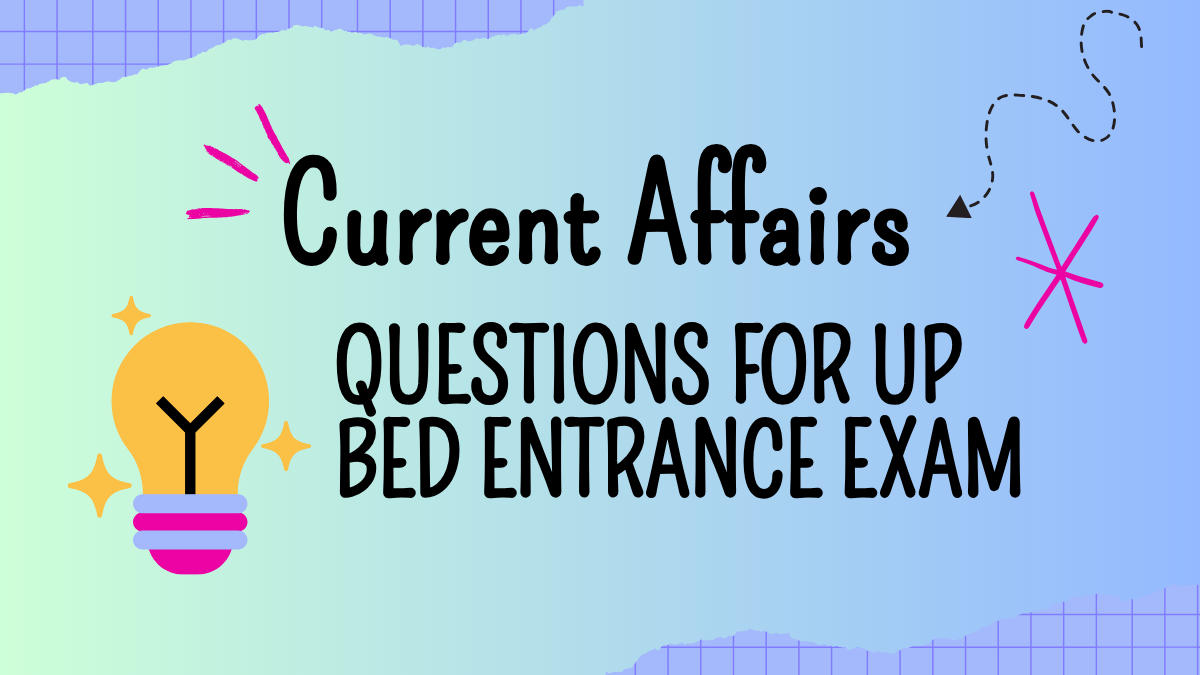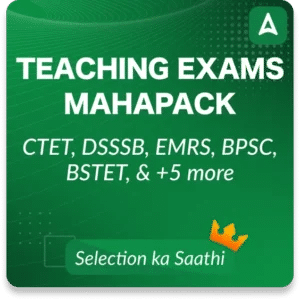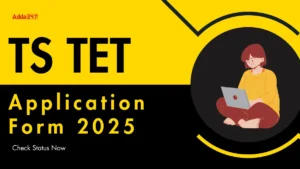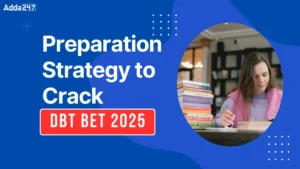Table of Contents
The UP B.Ed JEE is set for June 9, 2024. Conquer the entrance exam for your Uttar Pradesh Bachelor of Education (UP B.Ed) program with our Current Affairs Questions for UP BEd Entrance Exam resource. This section covers a wide range of topics, including national and international news, politics, sports, science and technology, awards, and significant events. Here is an overview of the key areas to focus on:
UP BEd Admit Card 2024 Download Link
Download Current Affairs Questions PDF
In the current affairs section of the UP BEd Entrance Exam, candidates can expect questions related to recent developments, events, and issues impacting the education sector, both nationally and internationally. This section typically assesses candidates’ awareness of educational policies, reforms, and trends, along with their understanding of socio-political dynamics influencing education. The direct link to download PDF of Current Affairs Question in below article.
Download UP BEd Current Affairs Questions with Answer
Benefits of Current Affairs Questions for UP BEd Entrance Exam PDF
Preparing effectively for the reasoning section of the UP BEd entrance examination requires a strategic approach. Here are some essential tips to help you excel:
- Relevance: Ensures candidates are informed about recent educational developments.
- Application: Bridges theoretical knowledge with real-world educational issues.
- Critical Thinking: Promotes analytical skills in assessing complex educational issues.
- Preparation: Equips future educators to navigate socio-political educational contexts.
- Communication: Enhances articulation of thoughts and ideas for effective teaching.
- Adaptability: Fosters readiness to respond to evolving educational landscapes.
Current Affairs Questions for UP BEd Entrance Exam
Q1. Which of the following statement is true about the Champaran Satyagraha?
(a) Rajendra Prasad and J.B. Kriplani was associated with this movement.
(b) It aim was to look into the problem of the Tinkathia system.
(c) Both (a) and (b)
(d) None of the above
Q2. Which of the following was not included in the resolutions of the Lahore Session of Congress in 1929?
(a) Preparing to launch Civil Disobedience Movement
(b) Declaration of India’s foreign policy
(c) Declaration of complete independence
(d) Abolition of untouchability
Q3. Who amongst the following is regarded as the historical founder of Jain?
(a) Mahavira
(b) Sisunaga
(c) Rishabhanatha
(d) Gautama
Q4. Which of the following pairs of various eras and the respective years they commenced from, is wrong?
(a) Saka Era; 78AD
(b) Gupta Era; 318-319 AD
(c) Vikram Era; 58 AD
(d) Kali Era; 3102 BC
Q5. ‘Abhijnanasakuntalam’ has been reckoned as a masterpiece of
(a) Bhasa
(b) Kalidasa
(c) Asvaghosha
(d) Sudraka
Q6. PART IV-A was added in the Indian Constitution by which amendment act?
(a) 44th Amendment Act
(b) 42nd Amendment Act
(c) 52nd Amendment Act
(d) 61st Amendment Act
Q7. Which of the following is not matched correctly?
(a) Article 164: Provisions related to State Ministers
(b) Article 163: Swearing in of the Chief Minister
(c) Article 166: Operations by the State Government
(d) Article 167: Duties of the Chief Minister
Q8. What is/are true regarding the term of the Governor’s office?
1. Governor holds office for a term of five years.
2. Governor has no security of tenure.
(a) Only 1
(b) Only 2
(c) Both 1 & 2
(d) Neither 1 nor 2
Q9. In India, The President’s Rule continues for six months, but it can be extended for a maximum period of _________ with the approval of the Parliament, every six months
(a) 3 Years
(b) 2 Years
(c) 1 Years
(d) 4 Years
Q10. Ban & prohibit the slaughter of cows, calves and other milch and draught cattle and to improve their breeds are come in which part of Directive Principles of State Policy (DPSP)?
(a) Liberal Principles
(b) Gandhian principles
(c) Social principles
(d) None of these
Solutions
S1.Ans.(c)
S2.Ans.(d)
S3.Ans.(c)
S4.Ans.(c)
S5.Ans.(b)
S6. Ans (b)
S7. Ans.(b)
S8. Ans.(c)
S9. Ans.(a)
S10. Ans.(b)




 Last Minute Preparation Tips for MP TET ...
Last Minute Preparation Tips for MP TET ...
 TS TET Application Form 2025 Out, Direct...
TS TET Application Form 2025 Out, Direct...
 Preparation Strategy to Crack DBT BET 20...
Preparation Strategy to Crack DBT BET 20...














